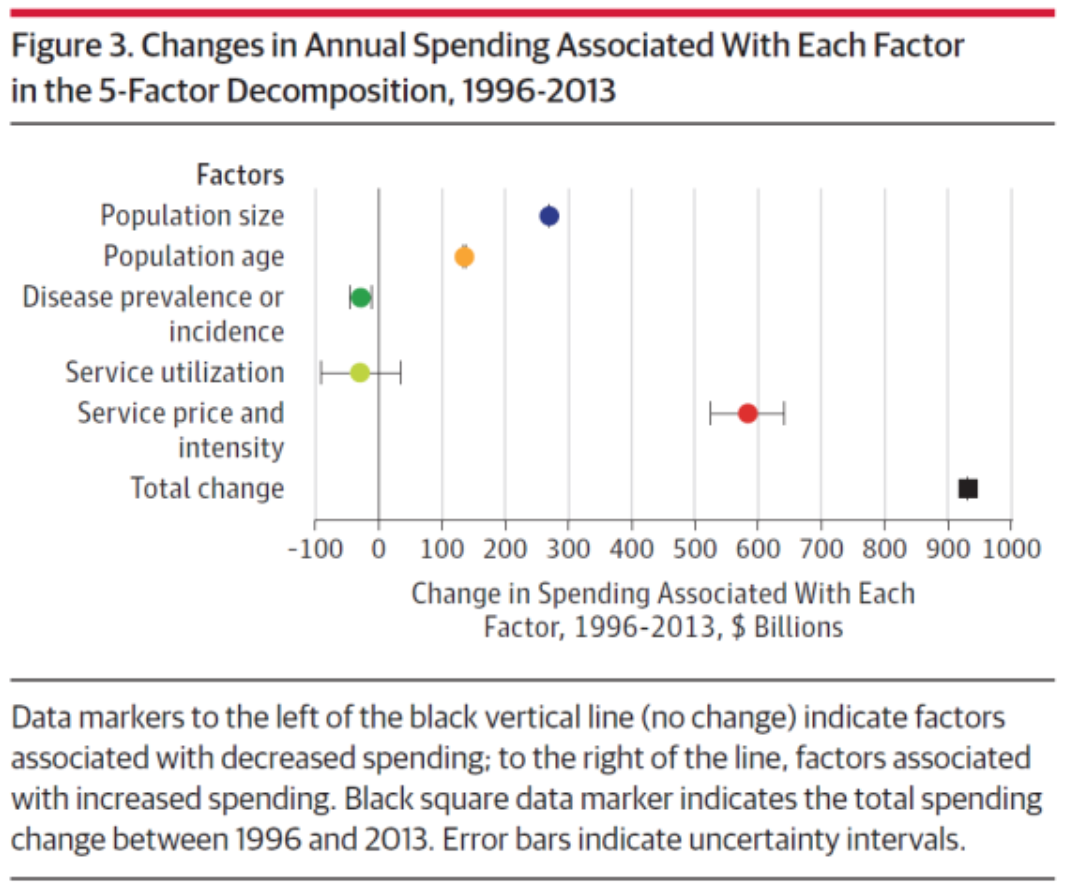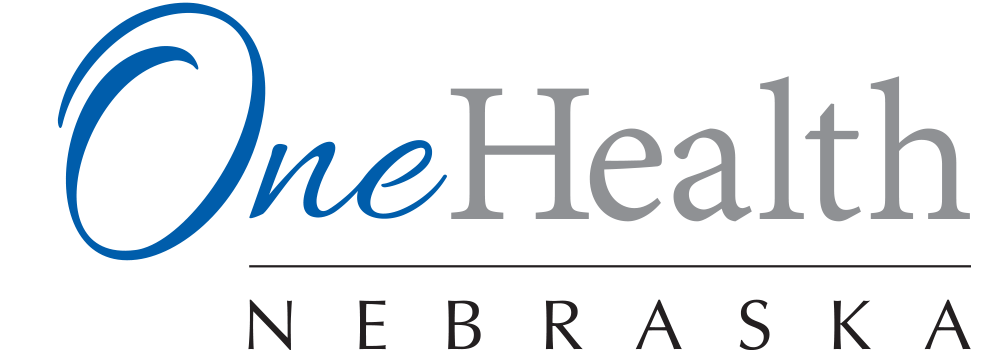A recent article in the Journal of the American Medical Association looked at what is driving the increase in healthcare costs from 1996-20013. The short version, it’s mainly prices that are driving the increase. Pundits and special interests each like to point at various scapegoats, but the article by Joseph Dielman and colleagues looked at the 5 factors that drive healthcare costs and compared each to the total change.
- Population size
- Population age
- Disease prevalence and incidence
- Service utilization
- Service price and intensity
This image puts each into context:

Looking into each of the 5 factors show some caveats worth discussing. First, some of the cost increase comes from a growing population. No surprise there. Second, some of the cost increase comes from a population that is aging. That’s a good thing! More of us surviving to old age even though it raises healthcare spending is something to be happy about! We don’t die as much from heart attacks, our cataracts are fixed so we don’t go blind, and our knees get replaced so we can stay mobile. I’m okay with this driving up healthcare costs a little.
Factor number three deserves a bit more discussion. The incidence of diseases overall has actually dropped a little but there are 2 competing things happening here. The incidence of heart disease is down, likely due mainly to the multi-decade drop in smoking. This could have led to a major “smoking reduction dividend” where our overall healthcare costs would have been lower and our life expectancy would have shot up if not for another competing problem that offset all of it. That would be the epidemic of physical inactivity and obesity. All the gains we would have seen from the reductions in smoking have unfortunately been offset by all of the health consequences resulting from our lack of exercise and sugar consumption. This has tripled the number of Americans with Type II Diabetes which is now responsible for 10-20% of employer healthcare costs.
Factor number four is also an important area to understand. Healthcare costs are not rising because people go to the doctor too much. If anything, Americans go to the doctor less often than in other countries. The idea that we need high copays and deductibles to prevent patients from overusing healthcare is wrong. It is based on the assumption that people love to use healthcare and need disincentives and some “skin in the game” so they don’t abuse the system. This may happen occasionally but is not major factor in healthcare costs. Think about it. Is healthcare something we all enjoy using? Most of us have better things to do than waste an afternoon in a doctor’s office waiting room. Patients aren’t going to get more mammograms and colonoscopies because they are free. Healthcare isn’t as fun as beer and pizza, which would get overused if they were made free. The real problem of patients overusing things and getting unnecessary tests comes from those in healthcare that incessantly market and fool people into thinking they need unnecessary healthcare.
The real problem that drives US Healthcare costs is the prices we are charged for almost everything, the subject of next week’s blog post. Stay tuned☺.
Bob Rauner, MD, MPH, Chief Medical Officer, OneHealth Nebraska ACO


I loved even more than you will get done right here. The picture is nice, and your writing is stylish, but you seem to be rushing through it, and I think you should give it again soon. I’ll probably do that again and again if you protect this hike.
Fantastic read! I was especially impressed by the depth provided on the topic, offering a perspective I hadn’t considered. Your insight adds significant value to the conversation. For future articles, it would be fascinating to explore more to dive deeper into this subject. Could you also clarify more about the topic? It caught my interest, and I’d love to understand more about it. Keep up the excellent work!
네타냐후 총리는 헤즈볼라의 드론과 미사일을 모두 격 추했다고 밝혔습니다
벤그비르 장관은 토지노 솔루션 최근 예루살렘의 성전산에 있는 알아크사 사원에 방문해 분노를 샀다
“Such a refreshing read! 💯 Your thorough approach and expert insights have made this topic so much clearer. Thank you for putting together such a comprehensive guide.”
Noodlemagazine I appreciate your site, but you need to review the spelling in some posts. Several of them have quite a lot of mistakes, which is slightly annoying, but I’ll certainly come back again.
FlixHQ I really enjoy your site, but I think you should fix the spelling in certain posts. A few have several issues, which can be frustrating, but I’ll still visit again.
ET9M4s1BuuQ
TLmoYjJv1aW
8I9OkG8STmK
c7ruVjHlEYo
Y6Ik1Nlc1RC
J1swCRijT4s
2owu1c5DzdK
JwV8KwpAzka
Vmt7b4nqZ8K
YgVl0wybGxq
QIDP77HyCmx
dcOzilhFTv5
FgvCivyoRms
ypw1modD970
hLGqKdnL8Yl
YWdUrJugyUB
oUqLv8dYBjw
n27rJdezCrS
Coebvu2LJxD
6liuMU6nRnI
IUif82iRJoF
IGcfEEtHSDu
ysz4ghzAOx7
rV1eYORElop
YDQcPUfSEzs
3G0nb2bn39j
lo0UjD3Bv7r
HS3kkSW3HcB
ppws4oMIATX
gulM6pcq7yO
3pb3jJbsDdh
ZoZ8eth4Ti3
eDgGNaFROf6
B6f8cxoOfGS
Sheg5Dj2qJJ
oUhPD9Kc7Tg
Your blog is a testament to your expertise and dedication to your craft. I’m constantly impressed by the depth of your knowledge and the clarity of your explanations. Keep up the amazing work!